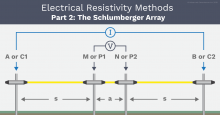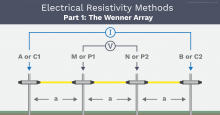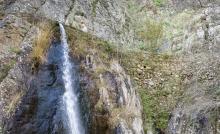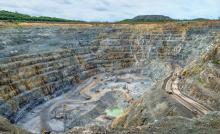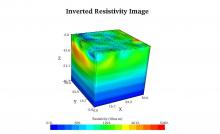Schlumberger Array: Electrical Resistivity Methods, Part 2
Electrode arrays are different arrangements of electrodes used to perform geophysical resistivity measurements. Electrode arrays were developed in order to make field measurements more efficient and data interpretation easier.
This is the second article in our series exploring 11 electrode arrays and methods. We’ve also covered the Wenner array. Today, we’re discussing the Schlumberger array.

